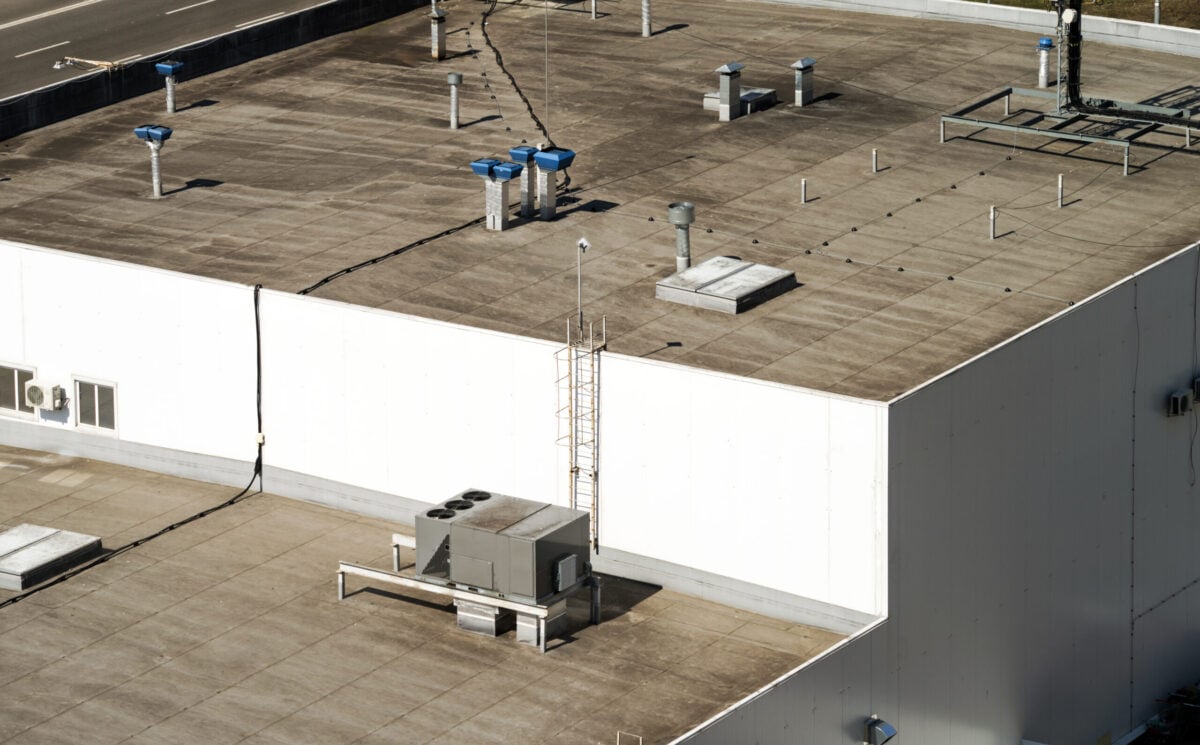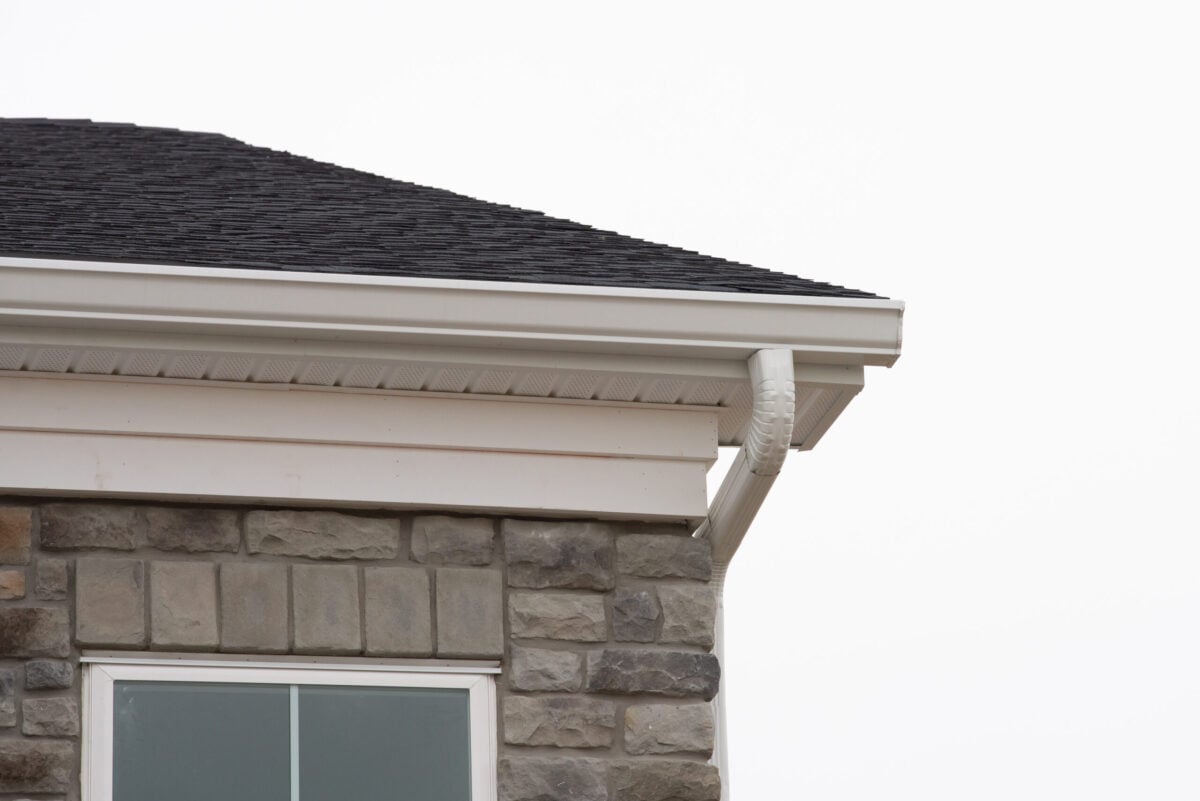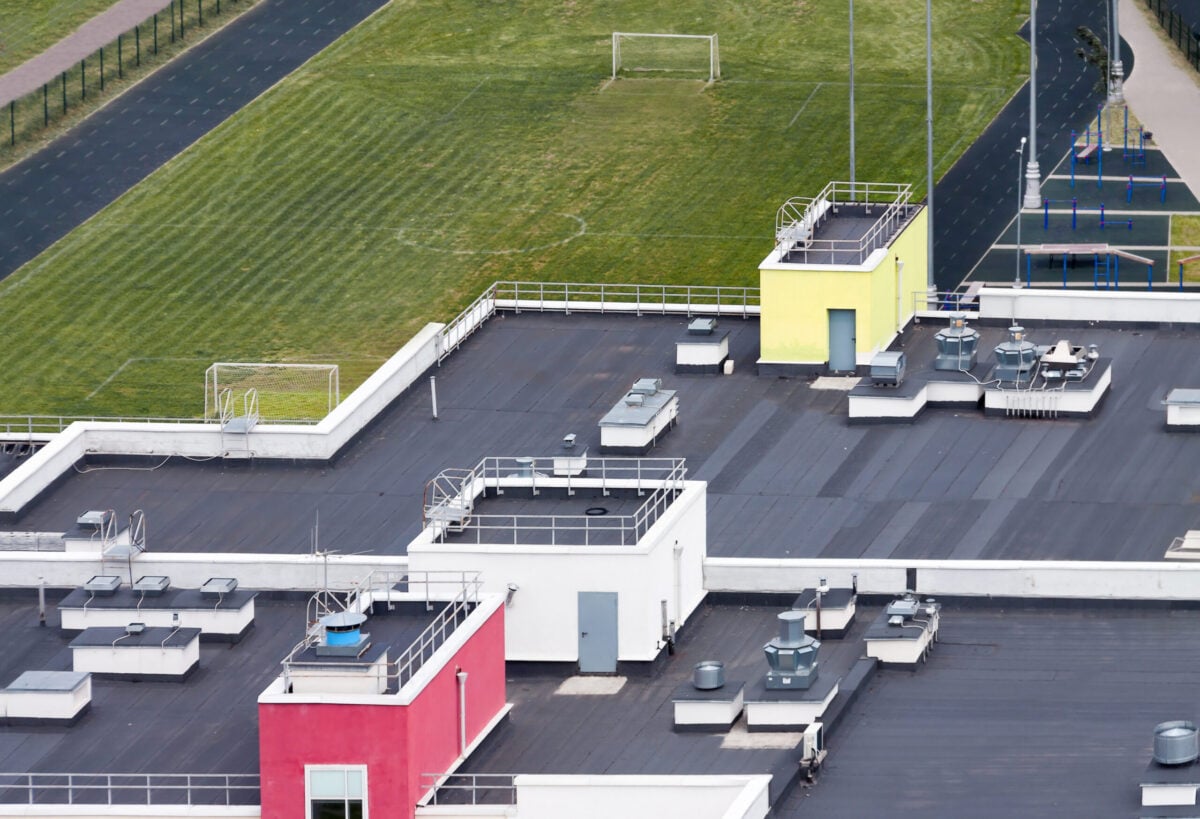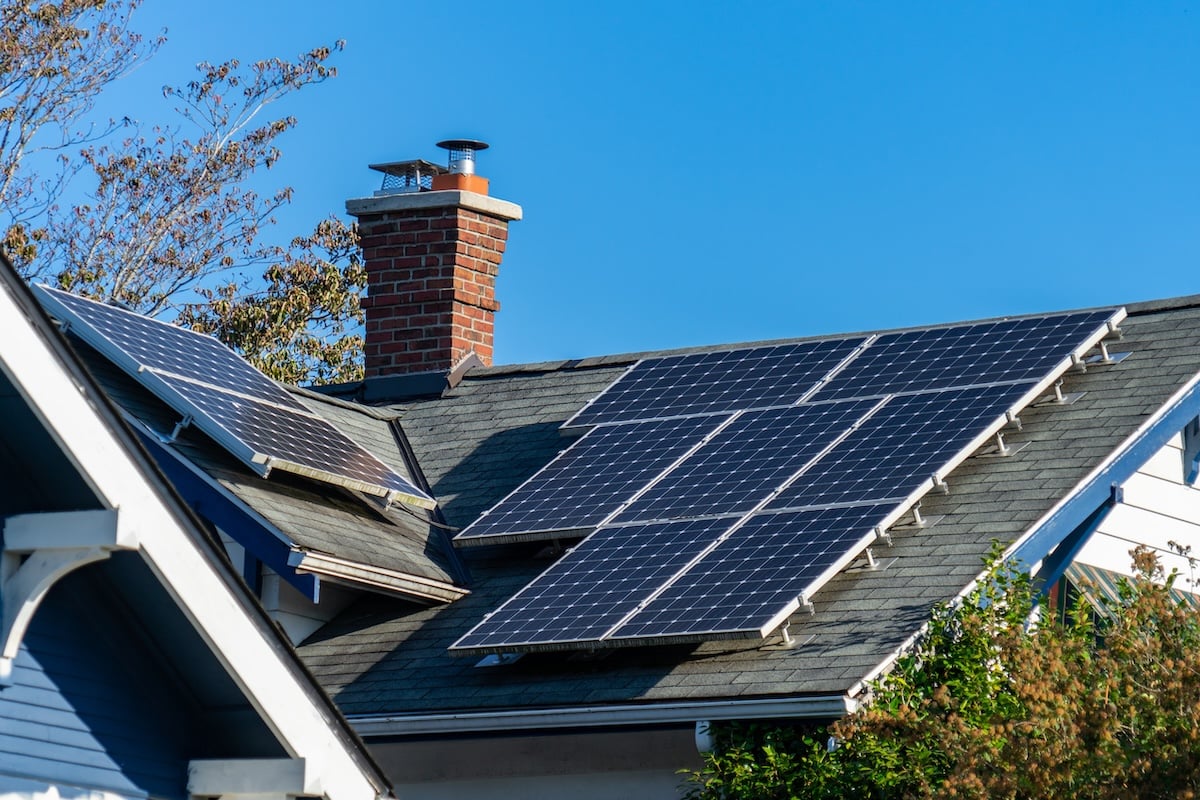
Commercial Roof Maintenance (8 Tips to Extend Roof’s Life)
Commercial roof maintenance is one of the most important investments you can make in your property. A well-maintained roof protects your business operations, safeguards your assets, and prevents costly emergency repairs that can disrupt your workflow and strain your budget.
This comprehensive guide covers everything you need to know about commercial roof maintenance, from routine inspections to professional maintenance strategies. We’ll explore the key components of an effective maintenance program, common problems to watch for, and practical steps you can take to maximize your roof’s lifespan.
- Regular inspections and assessments
- 8 essential tips to extend your commercial roof’s life
- When to call professional roofing contractors
🔎 Regular Inspections and Assessments

Consistent roof inspections form the foundation of any successful commercial roof maintenance program. Most commercial roofing problems start small but can quickly escalate into major issues if left unchecked.
Professional inspections should occur at least twice yearly, ideally in spring and fall. However, you should also schedule additional inspections after severe weather events, such as hailstorms, high winds, or heavy snowfall.
What to Look for During Inspections
During routine inspections, trained professionals examine several critical areas:
Membrane Integrity: The roof membrane is your first line of defense against water infiltration. Inspectors check for tears, punctures, or areas where the membrane has pulled away from its substrate.
Drainage Systems: Proper drainage prevents water accumulation that can lead to structural damage. Inspectors ensure gutters, downspouts, and drains are clear and functioning properly.
Flashing and Penetrations: Areas where the roof meets walls, vents, or other structures, are vulnerable points. Inspectors examine flashing around these penetrations for signs of separation or deterioration.
Structural Elements: The inspection includes checking for sagging, unusual wear patterns, or signs of structural stress that could indicate underlying problems.
💡 8 Essential Tips to Extend Your Commercial Roof’s Life

Extending the life of your commercial roof saves significant repair and replacement costs. Proper maintenance ensures better protection for your building and its contents over time.
1. Schedule Professional Inspections Twice Yearly
Regular inspections by a roofing professional are crucial for maintaining the longevity of your roof. These inspections help identify potential problems, like small leaks or damage before they escalate into larger, costlier issues. Scheduling inspections in the spring and fall is ideal because it allows contractors to address any concerns before the extreme heat of summer or the freezing temperatures of winter. Professionals can also check for damage caused by seasonal weather, ensuring your roof is in peak condition year-round.
2. Keep Drainage Systems Clear
Water is one of the most common causes of roof damage. When gutters, downspouts, or roof drains become clogged with debris, water can pool and lead to serious problems, such as membrane deterioration, leaks, or even structural damage. Regular cleaning of all drainage systems ensures water flows away from your roof efficiently. Additionally, inspect these systems after heavy storms to remove any accumulated debris, preventing long-term water buildup and reducing the risk of damage.
3. Address Minor Repairs Immediately
Small roofing issues can quickly snowball into major problems if left unattended. For example, loose flashing, small punctures, or separated seams may seem minor at first but can lead to leaks or structural issues over time. Tackling these repairs as soon as they’re identified saves you money and prevents further damage. Prompt action also extends the life of your roof by keeping it in good condition, reducing the need for larger, more expensive repairs in the future.
4. Maintain Proper Ventilation
Proper roof ventilation is essential for preventing moisture buildup and maintaining a consistent temperature beneath your roof. Without adequate ventilation, heat and moisture can accumulate, leading to damage to roofing materials, mold growth, and increased energy costs. Regularly check that air vents, soffits, and other ventilation systems are clear of obstructions and functioning properly. This ensures airflow is maintained, protecting the integrity of your roof and improving the energy efficiency of your building.
5. Control Roof Traffic
Excessive foot traffic on your roof can lead to unintended damage, such as punctures, dents, or wear and tear on the roofing materials. To minimize these risks, limit access to the roof to only essential maintenance activities. When access is necessary, use designated walkways or mats to protect the roof membrane. Additionally, ensure anyone working on your roof is wearing proper protective equipment to prevent accidental damage to the surface.
6. Trim Overhanging Branches
Tree branches near your roof can pose significant risks, especially during storms. Overhanging branches can scrape against the roof, causing damage to shingles or other materials. They can also break off during high winds, leading to severe damage. Furthermore, fallen leaves and debris from trees can clog drainage systems, leading to water buildup. By regularly trimming back branches near your roof, you reduce these risks and help maintain a clear, debris-free surface.
7. Monitor and Maintain Roof Penetrations
Roof penetrations, such as vents, chimneys, or equipment installations, are vulnerable areas where leaks have the highest likelihood of occurring. Over time, the seals and flashing around these penetrations can deteriorate, creating potential entry points for water. Regularly inspect these areas to ensure seals are intact and there are no signs of wear or leaks. If issues are detected, address them immediately to prevent water infiltration and protect the roof’s overall integrity.
8. Plan for Weather-Related Maintenance
Extreme weather events, such as storms, hail, or heavy snow, can cause significant damage to your roof. To minimize long-term damage, make it a habit to inspect your roof after severe weather. Look for signs of damage, such as missing shingles, punctures, or debris buildup, and schedule repairs promptly. Being proactive about weather-related maintenance ensures that small issues don’t turn into major problems and helps your roof withstand future storms more effectively.
👨🔧 When to Call Professional Roofing Contractors

While some maintenance tasks can be handled by facility management teams, many aspects of commercial roof maintenance require professional expertise and equipment.
Signs You Need Professional Help
Persistent Leaks: If water penetrates your roof even after initial repairs, it’s a clear sign that the issue runs deeper than just surface damage. Persistent leaks can indicate hidden problems such as deteriorated flashing, damage under the membrane, or even structural concerns. A professional inspection is essential to identify the root cause and implement a long-term solution that prevents repeated repairs.
Structural Issues: A sagging roof, unusual wear patterns, or visible signs of stress such as cracking or bowing are major warning signs. These issues could indicate weakened structural components, such as rafters or trusses, which require immediate attention to avoid further deterioration or collapse. A professional contractor can assess the extent of the damage and take the necessary steps to restore structural stability.
Membrane Damage: Roof membranes are critical for keeping water out, and any significant tears, punctures, or signs of membrane separation can compromise this protection. Even minor damage can quickly escalate, allowing water to seep through and damage insulation, decking, or interior spaces. Professional repair services ensure that the membrane is correctly restored and further damage is prevented.
Drainage Problems: Poor drainage can lead to standing water, which is one of the major culprits behind roof damage. Clogged drains, insufficient slopes, or improper water flow can weaken the roof over time and promote leaks or pooling. Professional contractors can assess the drainage system, identify blockages or design issues, and provide effective solutions to ensure proper water management.
Benefits of Professional Maintenance
Professional roofing contractors offer more than just basic repairs—they bring expertise and specialized skills to every project. Their in-depth knowledge helps them pinpoint small issues that an untrained eye might overlook, such as early signs of wear or hidden damage beneath the surface. By addressing these problems early, professionals can prevent minor issues from turning into costly repairs.
Having the right tools and equipment, professional contractors can perform repairs and maintenance tasks safely and efficiently. From working with steep slopes to handling heavy materials, they prioritize safety at every step, reducing the risk of accidents and ensuring that repairs are completed to the highest standard.
Maintenance vs. Replacement: Making the Right Decision
Making the choice between commercial roof maintenance and a full replacement depends on the roof’s age and the extent of the damage. Maintenance is the ideal solution for newer roofs with localized issues, especially when the cost of repair is less than 25-30% of a replacement. However, if the roof is old, has widespread damage, or requires repairs that are starting to approach the cost of a new installation, a full commercial roof replacement will provide better long-term value and protection for your business.
🏢 Protecting Your Investment with Professional Care
Commercial roof maintenance is essential for protecting your business investment and ensuring uninterrupted operations. A proactive maintenance approach prevents costly problems and extends your roof’s useful life.
At ROOF TIGER, we understand the unique challenges of commercial roof maintenance. Our experienced team provides comprehensive maintenance services designed to keep your roof in optimal condition year-round. From routine inspections to emergency repairs, we’re committed to protecting your property and your business.
Don’t wait for problems to develop. Contact ROOF TIGER today to schedule your commercial roof inspection and develop a maintenance plan that works for your business. Our team is ready to help you protect your investment and ensure your roof serves your business for years to come.






